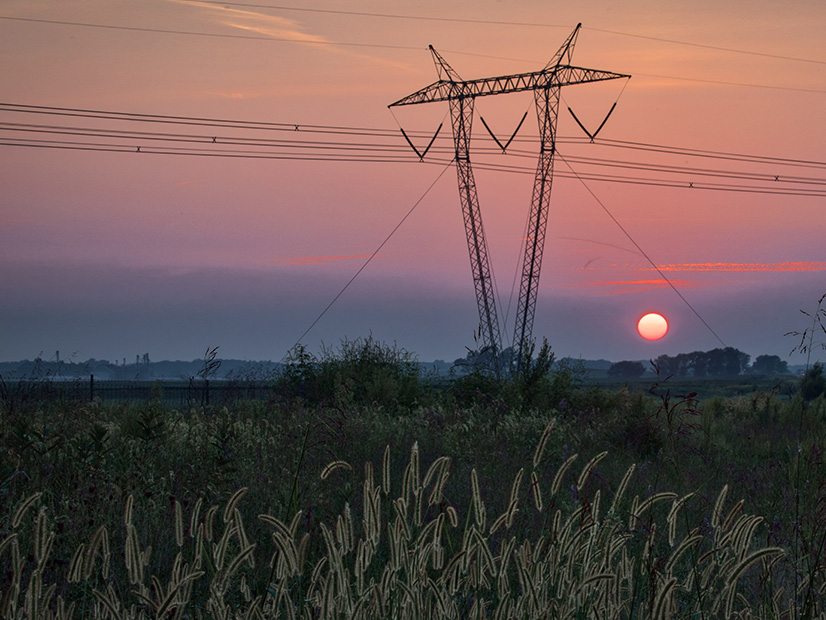Energy prices in PJM increased “significantly” in the first half of 2021 compared to last year, but prices remained lower than historical levels, the Independent Market Monitor reported.

In the second quarter State of the Market report for PJM released last week, Market Monitor Joe Bowring said the load-weighted average real-time locational marginal pricing was 57.8% higher in the first six months of 2021 than the same period in 2020, coming in at $30.62/MWh versus $19.40/MWh. Almost 92% of the increase was a result of higher fuel costs, especially higher natural gas prices, Bowring said.
The report said energy prices in the first half of 2021 remained 9.5% below the five-year average for the first six months of the period from 2015 through 2019. Energy prices were lower in 2020 than any year since PJM markets were established in 1999. (See “Prices, Load Down,” PJM Monitor Sounds Market Power Alarms.)
Despite the increased energy prices, the Monitor said, “Our analysis concludes that the results of the PJM energy market were competitive in the first six months of 2021.”
By the Numbers
PJM load increased by 5.9% in 2021 compared to the first six months of 2020, the report said, citing colder winter temperatures, hotter summer weather and the economic recovery following the disruptions from the coronavirus pandemic.
The report said the cost of transmission continued to be greater than the cost of capacity in the first six months of 2021, with the total cost of wholesale power increasing by 28%, from $43.03/MWh in 2020 to $54.97 during the same period in 2021. 2020 marked the first time since the start of the PJM capacity market in 2007 that the cost of transmission was greater than the cost of capacity for an entire year, the Monitor said.
Higher energy prices and higher gas costs have made coal units more economic so far in 2021, the report said, with the total share of PJM energy produced from coal increasing from 17.6% in 2020 to 23.5% this year. The share of energy produced from natural gas decreased from 39.2% in 2020 to 35.6% in 2021, the report said, but remained the largest segment of generation in PJM.
“The role of gas fired generation highlights the importance of ensuring that PJM has current, detailed and complete information on the gas supply arrangements of all generators and that PJM consider rules requiring capacity resources to have firm fuel supplies,” the report said. “It is also essential that FERC consider and address the implications of the inconsistencies between the gas pipeline business model and the power producer business model and the issue of market power in the gas commodity market under extreme weather conditions.”
Theoretical net revenues from the energy market increased for all unit types in the first half of the year, the report said, jumping by 69% for a new combustion turbine, 53% for a new combined-cycle unit, 3,288% for a new coal unit and 57% for a new nuclear plant compared to 2020. Total energy uplift charges increased by $55.7 million (236.8%), the report said, from $23.5 million in the first six months of 2020 to $79.2 million in 2021.
Total congestion increased by $174.2 million (97%), from $179.8 million in 2020 to $354 million in 2021. The report found that only 46% of total congestion paid by customers for the 2020/21 planning period was returned to customers through the auction revenue right and self-scheduled financial transmission right (FTR) revenues offset, while the goal of the FTR market design is to “ensure that customers have the rights to 100% of the congestion that customers pay.”
“When there are binding transmission constraints and locational energy price differences, customers pay more for energy than generation is paid to produce that energy,” the report said. “The difference is congestion. Congestion belongs to customers and should be returned to customers.”
Recommendations
The Monitor made two new recommendations for PJM and stakeholders to examine.
In the energy market, the IMM recommended that PJM calculate the probability of reserves falling below the minimum reserve requirement based on a 10-minute forecast error rather than a 30-minute forecast error and on forced outages in the 10-minute rather than the 30-minute look-ahead window if the RTO implements extended downward sloping operating reserve demand curves. The change would model the uncertainty in the inputs to real-time security-constrained economic dispatch, the Monitor said. (See FERC Approves PJM Reserve Market Overhaul.)
The IMM also recommended that units not be paid lost opportunity cost uplift when PJM directs a unit to reduce output based on a transmission constraint or other reliability issue. The report said there is no lost opportunity because a unit is required to reduce for the reliability of the unit and the system. (See “Fast-start Pricing Revisions Endorsed,” PJM MIC Briefs: Aug. 11, 2021.)


